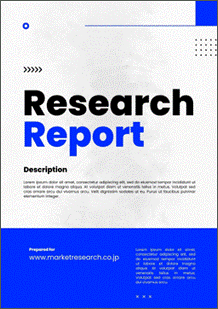 | • レポートコード:D-MOR01127 • 出版社/出版日:Mordor Intelligence / 2019年12月26日 • レポート形態:英文、PDF、89ページ • 納品方法:Eメール(受注後2-3営業日) • 産業分類:産業機器 |
| Single User | ¥555,000 (USD3,750) | ▷ お問い合わせ |
| Multi User | ¥629,000 (USD4,250) | ▷ お問い合わせ |
| Global Site License | ¥1,036,000 (USD7,000) | ▷ お問い合わせ |
• お支払方法:銀行振込(納品後、ご請求書送付)
レポート概要
North America HVAC Equipment Market – Growth, Trends, and Forecasts (2019 – 2024)
Market Overview
The North American HVAC equipment market was valued at 20.45 billion in 2018, and it is expected to register a CAGR of 4.6% over the forecast period (2019-2024). Heating, ventilation, and air conditioning (HVAC) systems are finding widespread adoption across the North American region, due to the multiple advantages HVAC systems offer, most notably power saving techniques.
Major factors driving the HVAC equipment market in the region include an increase in new households, rising average construction spending, rapid urbanization, and growth in disposable income across several major economies.
North America is witnessing a significant adoption of smart home and smart city initiatives. It is estimated that 12 of the world’s 50 smartest cities are located in the North American region. Furthermore, various governments in the area are also promoting the adoption of smart cities. For instance, Las Vegas is testing three pilot projects, with the government allocating USD 500 million to find ways to connect the entire city by 2025.
The United States and Canada rank among the world’s top 10 energy consumption countries in the world, with the US ranking at second, only behind China. To ensure a sustainable future, the United States Department of Energy (DOE) is heavily invested in improving energy efficiency standards throughout the country. The DOE’s mission is to ensure United States’ security and prosperity by addressing its environmental, energy, and nuclear challenges through transformative science and technology solutions. This led to the DOE placing minimum energy efficiency standards on appliances and equipment, which include air conditioners, washers and dryers, refrigerators, and more. According to the Consumer Federation of America, these standards are expected to save consumers a combined USD 1 trillion.
The declining IoT sensor costs are also expected to result in OEMs offering products for a lower and more competitive price, which could indirectly impact the HVAC equipment market.
Scope of the Report
HVAC equipment is an indoor and vehicular environment comfort technology that provides thermal comfort and acceptable indoor air quality. It is an important part of residential structures, such as single-family homes, apartment buildings, hotels and senior living facilities, and medium to large industrial and office buildings, such as skyscrapers and hospitals, where safe and healthy building conditions are regulated, with respect to temperature and humidity, using fresh air from outdoors.
Key Market Trends
Heating Equipment Segment to Exhibit Highest Growth
The demand for efficient heating equipment has led to its growth, making it one of the largest contributors to the HVAC equipment market in North America.
Heating equipment provides required heating environment in a cost-effective manner. Rapid growth in technology has helped the rise of efficient solutions for verticals to reduce emissions in an economical manner.
End users, like the commercial and residential segments, are using small units of HVAC equipment in the form of packages, in order to satisfy their energy demand. Large complexes are deploying efficient HVAC systems to meet their energy requirement.
The major contributors to the heating equipment market are furnaces and heat pumps, adding value to the demand of the major verticals across the world, followed by boilers and unitary heaters.
United States to Hold Major Share
North America is leading the race, as contribution and penetration rate of heating HVAC equipment is rapidly growing. The ongoing advancement is expected to result in rapid gains with rise in the expenditure of construction. Growth in repair investments, as replacement demand, is contributing to market growth. There is a rising demand for HVAC efficient systems with sophisticated technology. However, federal tax incentives are targeted, due to which high-efficiency systems expired in the beginning of 2016. The effect of this has provided an advantage for homeowners with better HVAC systems, being replaced with smaller units. Moreover, HVAC manufacturers in North America are increasing their focus on manufacturing HVAC systems that provide ease of use, and are more energy efficient and eco-friendly.
Competitive Landscape
The North American HVAC equipment market is highly competitive and consists of several major players. In terms of market share, few of the major players currently dominate the market. These major players with a prominent share in the market are focusing on expanding their customer base across foreign countries. In the past year, UTC, Daikin, Ingersoll- Rand, Johnson Controls, and Lennox International were some of the leading players operating in the North American HVAC market. Moreover, an increasing number of companies have started offering HVAC systems with higher energy efficiency, green technology, and compatibility with smart devices.
Reasons to Purchase this report:
The market estimate (ME) sheet in Excel format
Report customization as per the client’s requirements
3 months of analyst support
1 INTRODUCTION
1.1 Study Deliverables
1.2 Study Assumptions
1.3 Scope of the Study
2 RESEARCH METHODOLOGY
3 EXECUTIVE SUMMARY
4 MARKET DYNAMICS
4.1 Market Overview
4.2 Introduction to Market Drivers and Restraints
4.3 Market Drivers
4.3.1 Rise in Residential and Non-residential Users
4.4 Market Restraints
4.4.1 High Energy Consumption of HVAC Equipment
4.5 Industry Attractiveness – Porter’s Five Forces Analysis
4.5.1 Threat of New Entrants
4.5.2 Bargaining Power of Buyers/Consumers
4.5.3 Bargaining Power of Suppliers
4.5.4 Threat of Substitute Products
4.5.5 Intensity of Competitive Rivalry
5 MARKET SEGMENTATION
5.1 By Equipment
5.1.1 Air Conditioning Equipment
5.1.2 Heating Equipment
5.1.3 Heat Pumps
5.1.4 Dehumidifiers and Humidifiers
5.2 By End User
5.2.1 Residential
5.2.2 Industrial
5.2.3 Commercial
6 COMPETITIVE LANDSCAPE
6.1 Company Profiles
6.1.1 United Technologies Corporation (Carrier)
6.1.2 Daikin Industries Ltd
6.1.3 Lennox International Inc.
6.1.4 Electrolux AB
6.1.5 Emerson Electric Company
6.1.6 Carrier Corporation
6.1.7 Danfoss A/S
6.1.8 Uponor Corp.
6.1.9 Honeywell International Inc.
7 INVESTMENT ANALYSIS
8 MARKET OPPORTUNITIES AND FUTURE TRENDS